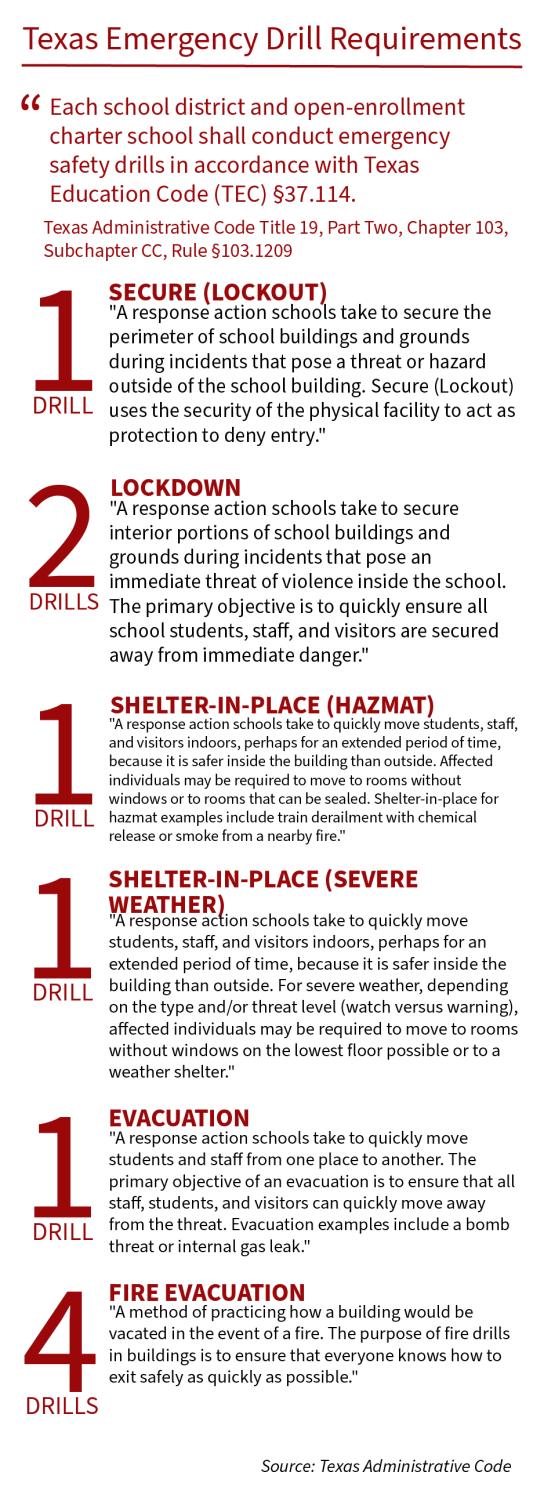Class, interrupted
Frequent emergency drills necessary to comply with local ordinances
Coppell High School students gather outside the building for an evacuation drill on Oct. 22. CHS conducts one evacuation drill per month in addition to five state-required evacuation drills in order to remain in compliance with International Fire Code requirements.
Attention, Coppell High School: this is an evacuation drill. Evacuate the building. Evacuate the building. Evacuate the building.
It has become a familiar sound to students and teachers at CHS, where drills seem to be constant. Be it a lockout, lockdown, evacuation or shelter drill, it seems to many like the drills are occurring almost weekly.


“When we schedule drills, we do try to schedule them at different times,” CHS assistant principal Zane Porter said. “So if we did an evacuation on an A day, I’ll make the next one on a B day. If I did one during first period on one day, then I’ll try to make it sixth or seventh for the next one. [We schedule them during] different parts of the day so that kids understand where they are in the building and how they get out of those spots.”
The state requires schools to conduct a certain amount of drills, broken down by drill type: one lockout, two lockdowns, five evacuations and two shelter drills. Coppell ISD has its own requirement to follow: an additional lockout drill and one evacuation drill in every month that has at least 10 days of school.
“Simply stated, the City of Coppell (and Irving, and Dallas) all have City Ordinances that govern the frequency of mandated evacuation drills,” said Coppell ISD safety and security coordinator Rachael Freeman via email. “Chapter four of the International Fire Code (IFC) requires that all buildings in Group E (E for Education) perform one evacuation drill per calendar month where we are in session for 10 or more days, and that all occupants must participate in the drills. [Since] CHS has multiple buildings assigned to one location (tennis center, field house, CHS-main), to be in compliance, all buildings at CHS must participate in the drill.”
Prior to this year, only the main building would be evacuated. The updated drill protocol ensures that students and staff in all parts of the CHS campus are familiar with their evacuation routes. The ordinance requiring the monthly drills can be found in chapter four, section 405.2 of the IFC.
“I think that the drills do take time away from class, but our number one priority as a public education system is safety for kids,” Porter said. “Academics has to come second because you have to be safe before your academics matter.”
CISD campuses utilize Navigate360 to account for students during drills. On the app, teachers can submit their attendance count of their class during a drill. While teachers are counting their students, administrators walk the halls of CHS to ensure nobody is left in the building.
The Navigate data is recorded, providing Porter with data as to how effective CHS has been in its drills. He looks for all students to be accounted for and the building to be emptied quickly and efficiently. According to Porter, this count gets better with each drill.
“Even our administration sometimes thinks we’re doing too many drills,” Porter said. “But at the end of the day, we do those drills for the safety of our kids. Sometimes you have to have a momentary inconvenience in order to prevent something in the future.”
Follow Anjali (@anjuvishwanath) and @CHSCampusNews on Twitter.

Anjali is a senior at Coppell High School, second-year staff writer and designer and the 2021-22 daily news/assignment editor for The Sidekick. She is...

Shreya is a senior and second year staff photographer for The Sidekick. In her free time, she enjoys listening to music, watching, yet another, tv series,...








